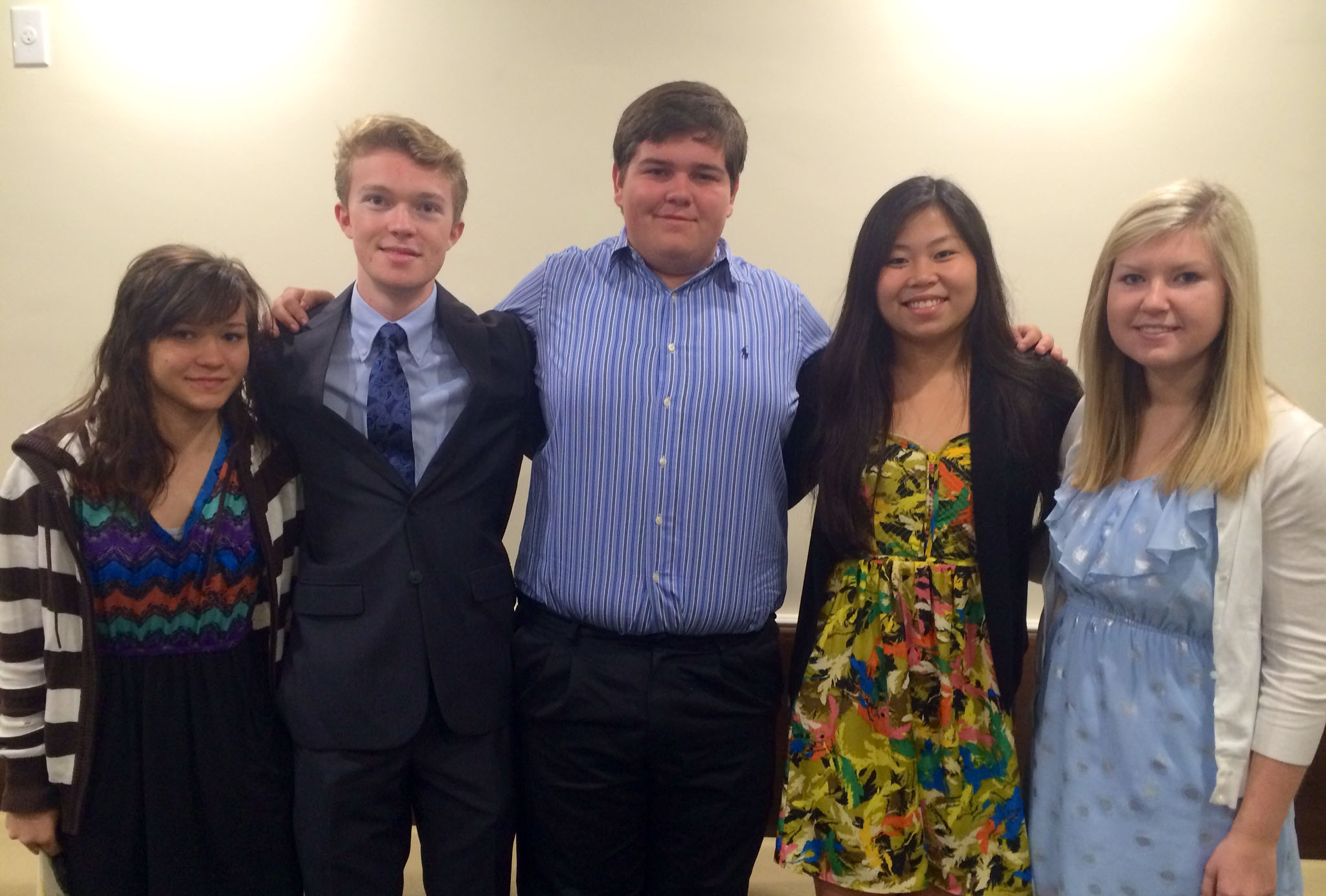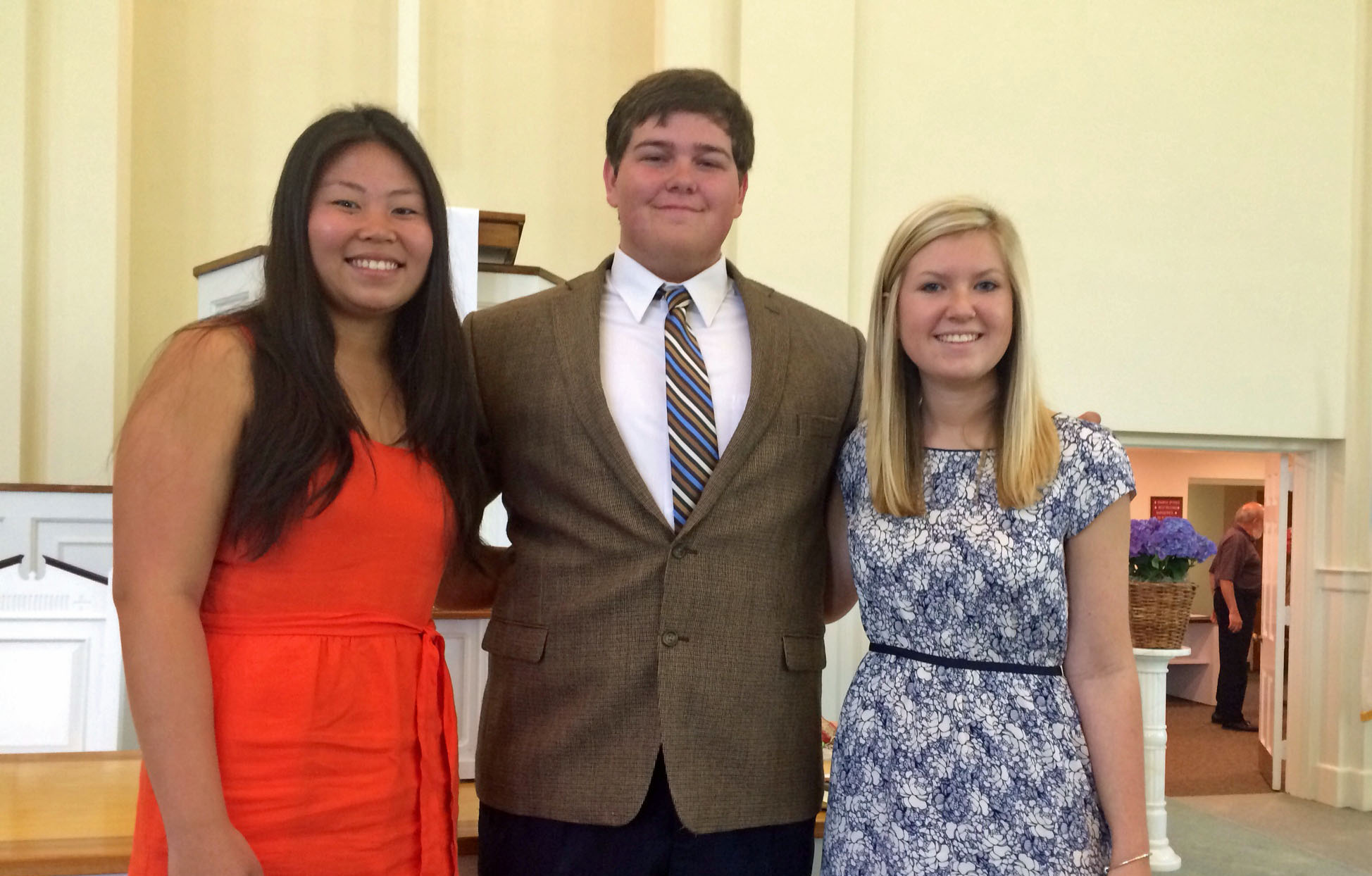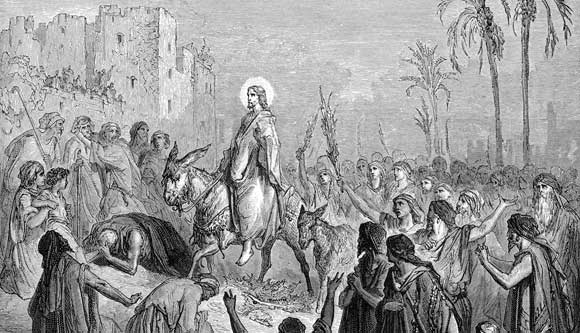Congratulations and best wishes to our 2014 high school graduates! May God bless each of you, now and always.


Congratulations and best wishes to our 2014 high school graduates! May God bless each of you, now and always.

June 4,11,18,25 Summer Play-Around, for band, sponsored by New Philadelphia Moravian Church. 7:00-8:00 p.m. each Wednesday during June, July, and August, New Philadelphia Moravian Church Fellowship Hall, 4440 Country Club Road, Winston-Salem, NC.
Players select chorales from the green and blue band books, to be conducted by guest conductors from local Moravian bands. First meeting for 2014 on June 4, conducted by Nola Knouse.
Perfect for those learning a new part or a new instrument, or who just enjoy playing! Come and bring a friend! For further information, call Steve Anthony: 336-725-3441.

Many thanks to all of our youth who helped lead worship on Youth Sunday! We are grateful for all who participated in planning, organizing, and leading such an inspiring service of worship. In particular, we thank Brianna Burris, Chris Underdal, and Abby Johnson for preparing excellent sermons on “Faith and Perseverance.” Thank you!

Luke 24:1-11
If the events described in Luke 24:1-11 appeared in the Winston-Salem Journal, the headline would read, “Garden Tomb Found Empty.”
Then the story, like all good stories, would give us the 5 W’s: Who, What, Where, When, Why?
The first W is who. Who is it about?
St. Luke tells us that at least five women were involved. First, there was Mary Magdalene. Luke has written about her before. In an earlier story, he told us that she is the one from whom seven demons had gone out. If any woman ever had reason to be grateful to Jesus, it was her. The second woman was Jo-Anna, who was the wife of Chu-za, Herod’s steward. Her presence in the story hints at why Luke alone tells us that on the night he was betrayed, Jesus appeared not just before Pilate, but also before Herod. The third woman was Mary the mother of James. We assume that he is talking about James the younger—whom Mark also names, not James the brother of the Lord. If Mary the Mother of Jesus had been present at the empty tomb, St. Luke would have made that clear, as he did when he named her in Acts 1, as being with the disciples in the Upper Room some little while after the Resurrection and Ascension of Jesus. Luke tells us that at least two other women were present at the empty tomb, but he does not identify them. Perhaps, because he knows of other traditions, and he does not want to contradict them.
I think it is interesting that though the four gospels name different women, and different numbers of women, it is always the women who discovered the empty tomb.
It is interesting because in those days, every male Jew greeted the morning sun with a prayer, “O, Lord, I thank-you that I am not a Gentile, a leper, or a woman.” Women were not even allowed to bear witness.
Jesus raised the status of women; but few men were of his mindset.
The man we call Luke was a almost certainly a Gentile, and he may not have known that. However, scholars tell us that the gospel according to St. Mark is older than that by St. Luke, and St. Luke almost certainly followed him. The man we call St. Mark was Jewish, and he would have known better.
In his Cambridge Commentary on St. Mark, C.E.B. Cranfield says that making the women the primary witnesses to the empty tomb was not a choice for Mark. He had to work with the facts. He may not have liked them, but he had to work with them. He adds that if Mark had set out to create a legend, he did a poor job of it.
The second W is what. What happened?
That is easy enough. The women went to the tomb to anoint the body of Jesus. They found the stone had been rolled away from the tomb, but they did not find the body. And while they were perplexed about this, two men dressed in dazzling apparel, stood by them, and the women were frightened, and bowed their faces to the ground. And they said to them:
“Why do you seek the living among the dead? Remember how he told you, while he was still in Galilee, that the Son of man must be delivered into the hands of sinful men, and be crucified, and on the third day rise.”
And the women “remembered his words,” that is, they remembered the words of Jesus, and returning from the tomb they told all this to the eleven and to all the rest. But, according to the text, “…these words seemed to them an idle tale, and they did not believe them.”
William Barclay comments that, in the original language, the women are compared to men sick with fever, babbling strange words, that could not be comprehended.
If St. Luke was trying to create a legend, he, too did a terrible job, because he tells us that the women had faith, while the disciples remained skeptics. In the gospels it is never the empty tomb that produces faith in the disciples. They are all like the man we call Doubting Thomas. They did not believe until the Risen Christ himself appeared to them, and led them into belief.
The third W is where. Where did all this take place?
Where else, it took place in a graveyard. Sooner or later all human stories end in a graveyard. F. Scott Fitzgerald said, “Show me a hero, show me a heroine, and I will write you a tragedy.” In this life, there are no stories that end, “and they lived happily ever after.”
Tolstoy tells the story of a young man who inherited a considerable property from his father. At once he determines to enlarge it at every opportunity. One day a distinguished stranger happens by. He is obviously a man of wealth and power. The young man tells him of the plans he has for his land.
“Well,” says the stranger, “here is what I will do to help. Whatever land you can cover by the end of the day tomorrow, I will give to you, but you must finish at this spot where you now stand.”
The young man is very excited. First he plans to walk a two mile square, a total of eight miles. Then he determines that he can do a four mile square, a distance of sixteen miles. Then it is ten miles, a forty mile run. At last he sets his goal at 15 miles, a 60 mile run. That is more than two times the distance of the Boston Marathon, on the same day, with no training before hand.
The next morning the young man sets out before the sun is up. He runs, or walks, as hard as he can go all day long. He ignores his need for food, for rest, for water. As the day closes he stumbles back to the stranger’s feet, where he pitches down, dead.
The stranger, who is revealed as Death, smiles and says, “There, you have what I have promised, all the land you can cover—-six feet by two feet.”
It does not matter where our human story begins. It does not matter how well we train, or how well we run the race that is set before us. Our stories always end in a graveyard.
All but one, that is. The world crucified Jesus, and, thanks to the generosity of a friend, they laid him in a borrowed tomb. They sealed it with a stone. And on the third day, the stone was rolled away, and the tomb was empty. And the real story of Jesus had begun, and now it covers the Earth. You may not believe it, but billions of people have, and do. And the Risen Christ with power to save is the single, best hope of humankind.
The fourth W is when. When did it take place?
Well, it took place early in the first century of what is called the Common Era. It took place on the third day after the crucifixion of Jesus of Nazareth, a prophet, full of the Holy Spirit, and mighty in Word and in Deed. He was the one that many hoped would redeem Israel.
Just before his death, his followers were flying high. Two of them asked, “Can we sit one at your right hand, and one at your left when you come into your kingdom?” They knew his kingdom was coming, and they would reap the benefits.
Then their Master was crucified, dead, and buried, and the kingdom was only a bitter memory. For two long, terrible, dark days, a fog of depression and despair settled over them. It looked as if the Enemy had won.
Those two terrible days put me in mind of something that that happened in London after one of Lord Nelson’s fiercest sea battles.
After the battle a ship—which could hardly be spared, was dispatched to England with news of the conflict. When it arrived at Gravesend, a rider was sent to London. When the rider arrived in London, he went immediately to St. Paul’s, where he gave the curate signal flags to be placed in the church tower.
In those days, whether at sea, or on land, the news was communicated by flags.
The first two flags went up—Nelson Defeated…
Then a literal fog settled on London. Nothing more could be seen. The people filled the streets, and then the taverns. Their hopes were dashed to pieces. Nelson defeated! If Nelson could not stop the enemy, who could. London itself would soon be at the mercy of foreign invaders. Then the fog lifted. Other flags had been added.
Now the message read—Nelson Defeated the Enemy!
Jesus defeated the enemy, too. For two days he lay in the garden tomb, then, on the third day, God raised him from the dead. He defeated sin, death, and the devil. Mighty forces stood against us, but he stood for us, and he is the Victor.
Hail, all hail victorious Lord and Savior,
Thou hast burst the bonds of death;
Grant us as to Mary, the great favor,
To embrace thy feet in faith.
Thou has for us the curse endur-ed,
And for us Eternal Life procur-ed,
Joyful we, with one accord, hail Thee as our risen lord.
And then there is the final W, Why. Why did it take all this take place?
There are several different ways to answer that question.
The first answer is that God wanted to make it plain that Jesus was not a shade, or a ghost, or a spirit. His body was sown a physical body; it was raised a spiritual body; but it was his body that was raised. He was transformed into a whole new order of being.
The second answer to that is that God raised Jesus from death, to vindicate him, and put God’s stamp of approval upon Jesus and his ministry. Tradition says that St. Luke was a companion of Paul. In Romans 1:4 St. Paul says that Jesus was “designated son of God, in power, though a Spirit of holiness, by his resurrection from the dead.”
If Christ has not been raised, then the cross is the bad end of a good man, nothing more, and we are still in our sins. But if Christ has been raised from the dead, the cross was a road traveled once, for all, by our now victorious Lord and Savior. As Paul says in 1st Corinthians 15, “He died for our sins, in accordance with the scriptures.”
The third answer to that question is certainly that the empty tomb stands as the massive sign that God has not abandoned us in our little world of time and space, but penetrated it, shattered it, and begun its transformation.
Because he lives, we know that we will live also.
Max Lucado tells the story of a missionary in Brazil who discovered a tribe of Indians in a remote part of the jungle. A contagious disease was spreading across the village. People were dying daily. The tribe was in need of medical attention. A hospital was not too terribly far away — just across the river, but the Indians would not cross the river because they believed the river was inhabited by evil spirits. For them to enter the river would mean certain death.
The missionary explained how he had crossed the river in his little boat, and was unharmed, but the people did not believe. He then took them to the river, and washed in it, but the but the people did not believe. Then he walked into the water up to his waist, and then up to his neck, but it did not matter. The people did not believe; they were still afraid to enter the river. Finally, the missionary took a deep breath, and plunged to the depths. He swam beneath the waters until he emerged on the other side. He raised a triumphant fist into the air, and the Indians broke into a cheer and then they followed him across the river.
Jesus has taken the plunge. He entered death’s cold and sullen stream, once for all, and he emerged on the other side, triumphant and victorious, that death might no longer hold us in fear.
Now let me quickly ask a final question, lest some of you, who sometimes despair of life, plunge quickly into the stream. This is a question that newspapers used to leave to Time, and Newsweek, and U.S. News & World Report. The question is how? How was Jesus raised from the dead?
The answer is quite simple. He was raised by the power of God.
Some would say, “Oh, that is impossible.” They should read about the creation of the universe. How everything that now is was collapsed to a point that was so infinitesimally small, that it was nothing, a singularity. Then, there was a Big Bang, and less than a minute later the universe filled a million billion miles and it was still growing.
If God can do that, then raising a man from death is small potatoes indeed.
And here is the good news. The same power that took Jesus Christ out of the grave is available to you, today, not just in the moment of death, but in the midst of life.
The Risen Christ with power to save still walks among us, and he still offers his solace and help, to all who call upon his name. He may not deliver you from your trouble, but he will deliver you through you trouble, until you come at last to stand before him, in that day which has no sunset and no dawning.
Finis
Worth Green, Th.M., D.Min.

Matthew 21:1-11
There is a familiar passage in Shakespeare's "Hamlet" that goes like this:
This above all: to thine own Self be true,
And it must follow, as the night the day,
Thou canst not then be false to any man.
Jesus of Nazareth was the Servant of all, but he was true to himself. Nowhere is this better seen than in the story of his triumphal entry into Jerusalem on the back of a colt, the foal of an ass.
As the typical traveler approached Jerusalem, he would dismount, and lead his beast into the city, so that not one of the people of Jerusalem would suppose that he was bold enough or foolish enough to enter Jerusalem in the manner that Zechariah prophesied for the coming of the Great King.
Rejoice greatly, O daughter of Zion! Shout aloud, O daughter of Jerusalem! Lo, your king comes to you; triumphant and victorious is he, humble and riding on an ass, on a colt the foal of an ass. Zechariah 9:9
H=Jesus did just the opposite. He sent his disciples to find an animal (Matthew says it was two animals, but I believe the text is a result of copyists error) just like the one described by Zechariah. And, then, placing himself upon it, he entered the city in the manner that Zechariah had prophesied. In this simple act Jesus proclaimed to the city, and to the world, that he was God’s Messiah, Christ, King.
And the city responded. The disciples went before him, strewing his path with their garments and with branches they cut from the trees, and they cried out, “Hosanna to the Son of David! Blessed is he who comes in the name of the Lord! Hosanna in the highest!”
In this act Jesus was absolutely true to himself, and to his mission. Jesus had come to Jerusalem for two reasons: 1. He had come to Jerusalem to announce his identity, and 2. He had come to Jerusalem to force the hand of the authorities. In doing the former, he accomplished the latter. After his triumphal entry there was no way that the authorities, Jewish or Roman, could ignore Jesus. There was a new King in town, and King Jesus would not bow to the High Priest, and King Jesus would not bow to Herod, and King Jesus would not bow to Caesar.
Hear again those words of the Bard of Avon:
This above all: to thine own self be true,
And it must follow, as the night the day,
Thou canst not then be false to any man.
Think how often that the spirit of these words has guided the truly great of this world.
Think of Galileo, watching a lamp swinging in a lazy circle in the cathedral at Pisa, when he ought to have been listening to a sermon by his bishop. It was as he watched that swinging lamp that Galileo reached a conclusion..the Earth orbits the sun, not the sun the Earth. The church of his day which still read the Bible as a scientific text book, and believed in a flat earth cried, “Heresy.” They delivered Galileo to the inquisitors. They threatened him with torture, and with excommunication. Officially, Galileo recanted. But after he recanted, he rose to his feet and muttered, "But it does move." He was true to himself, and others who followed confirmed his theories, and a modern world is in his debt.
Think of Winston Churchill, the great Prime Minister of England. As a member of the House of Commons, Churchill warned against the dangers of Hitler. He said that Der Fuer had one goal---to subjugate all of Europe. He urged Britain to build up her army and her Air Force. He was a laughing stock. Then, all his predictions proved true. He was elected to the office of Prime Minister, and no one has ever done better by that office. When Great Britain was forced to stand for a time alone, against the wrath of Germany, Churchill shook his fist in the face of Hitler saying, "We will have no truce or parley with you, or the grisly gang who work your wicked will. You do your worst---and we will do our best!" Winston Churchill was true to himself, and true to his convictions, and the modern world has been forever grateful.
Or think of Rosa Parks, who was so tired that she refused to go to the back of a Birmingham Bus. A tiny little woman engaged in one small act of civil disobedience, and she shook this nation to its core. And a modern world has been forever grateful.
If Jesus Christ had not set himself upon that colt, the foal of an ass, he might have avoided the cross; but if Jesus Christ had avoided the cross, he would not have been true to himself, and true to his mission.
If Jesus had avoided the cross we might never have seen the first light of God’s Eternal Day break forth from this Garden Tomb. And if Jesus had avoided the cross we might not pray to him, as we have during Lent, to “welcome us into his open arms stretched out upon the cross. “
Now it is all well and good to talk about Jesus Christ being true to himself, but can we lay the same exhortation upon ourselves. Can we speak of being true to ourselves in a world that we share with 7 billion 226 million other people.
I think we must. According to Jesus, the first and greatest commandment is to love God. The second, which he likens to it, is to “Love our neighbor even as we love our selves.” Love is not just affection; love is also respect. Jesus knew that if we did not have both affection and respect for ourselves, we could not possibly love and respect others.
Of course, many of us will have a hard time loving and respecting ourselves. We think of ourselves as damaged goods. We are disappointed that we have expected little of ourselves, and achieved it. We know that we have willfully broken and transgressed God’s Law. We know to do good, but we have not done it.
How can we love and respect ourselves.
That is a good question. I will never forget when I found my answer. A young man barely out of his teens put that question to me as he was in hospital recovering from a nervous breakdown. His breakdown was precipitated by his total lack of respect for himself, which grew out of his great moral failures.
He asked, “How can I ever overcome my past?”
I had a pack of note cards with me. I used to carry them in the days before smart phones. I took one out and I wrote, “When we belong to Jesus Christ, we can remember our past, but we must remember it like it happened to somebody else, because Jesus Christ has claimed it for his own.”
The next year he rode a bus to Winston-Salem to play his horn in our Easter Band. When I met him that morning, he handed me a badly worn note card. It read, “When we belong to Jesus Christ, we remember our past, but we remember it like it happened to somebody else.”
The self is not all bad, but we need to draw a line between the Ego and the Self.
The Ego is the Old Self. It is self-aware, it thinks, it imagines. This is good, but it does more. The Ego seeks to put itself forward. It seeks to win the game of life. It climbs the corporate ladder. It fights jealously for all the rights and privileges it considers to be its due.
When Jesus said, “If anyone would follow me, he must deny himself, and take up his cross and follow me," he was talking about the Old Self, the Ego. But the Self is something more than mere Ego. According to the great Swiss psychiatrist and psychologist Carl Jung, the Self is the most primitive of the archetypes of our collective unconscious. It is the thing in each of us that strives for health and wholeness. It lifts up strong hands in the quest for perfection.
Jung says that all the archetypes express themselves within, in the mind, but also without, in society. Though Jung was hardly an orthodox Christian, he said that in the outer world, Jesus Christ represents Self that all of our inner selves want to emulate.
St. Paul would have agreed completely. St. Paul says that the man Adam was the archetype of our old sinful selves. He called Adam, the man of dust, and said that he led the world into sin. St. Paul says that Jesus Christ is the last Adam, the archetype of our new humanity. He says that as we have borne the image of the man of Dust, the first Adam, so in Christ, we all bear the image of the man from Heaven, the Last Adam, Jesus Christ.
Sometimes, without even realizing it, each of us, deep down, in our one true Self wants to be like the magnificent Self who rode into Jerusalem on a colt, the foal of an ass, because he had to be true to himself, and true to his mission, and true to his God, and Father. How do we become our true Self.
First, it means we must look not for the worst in us, but for the best in us.
Let me ask you a question, “Who are you?” Are you the person you are when you are at your worst, or the person you are when you are at your best?
The scripture consistently teaches that we are the person we are when we are at our best, not the person we are when we are at our worst. We remember that Thomas doubted, but he was also the first to confess Christ as his Lord and his God. Tradition says that Thomas planted the Church in India. And we remember that Peter denied, but we also remember that when Peter turned again, he strengthened his brothers and sisters, and became a pillar of the church in Jerusalem. Tradition says that he was crucified upside down, because he refused to be crucified in the same manner as his Lord. Mary Magdalene was a woman of uncertain past. Some argue that she may have been a prostitute. Yet both John and Matthew tell us that Mary was the Apostle to the Apostle, the first to see the risen Christ, and to embrace his feet in faith. I could go on and on.
Second, being true to ourselves means that we must believe that our gifts are given to us by God.
This was surely the case with Jesus. The day would come that even the members of his own family accused him of being "beside himself." But he remembered that day in the rivers of Jordan after John had baptized him that the heavens open, and the Spirit descended, and the voice came to him, declaring, "Thou art my beloved Son, and with thee, I am well pleased!"
I grew-up believing that in order to be a follower of Jesus Christ you had to find the hair shirt that God made just for you, and put it on, and be miserable.
Nothing could be further from the truth. We do not even know who we are until we discover who we are in Jesus Christ. God does not give out hair shirts. God gives out robes of righteousness, the righteousness of Christ. We make our hair shirts, and put them on out of guilt that God wants to take from us.
Third, if we are to be true to ourselves,we must never give up, or be discouraged.
When Jesus rode through the gates of the city, he heard the Hosannas. Yet he knew he was taking a short ride that would lead to longest, darkness night of his soul. But he did not dwell on the darkness of that night. He looked forward to the Joy that he knew would come in the morning, on the third day. The author of Hebrews writes, “For the joy that was set before, he endured the cross, despising the shame, and is seated at the right had of the throne of God.
I once had some good advice from a dying man, so I will pass it along: Never give up! Never give up! Never give up! It is only in the darkest night that the stars can truly shine. When we have reached the end of our resources, we have hardly tapped the beginning of God’s resources, and he can do in us, and through us, and for us, far more than we can ask, think, or imagine.
Jesus rode the colt, the foal of an ass into the city of Jerusalem, and God made him the King of Kings and the Lord of Lords.
Finis
New Philadelphia Sermons
Dr. Worth Green

On May 3, 2014 we will be cooking whole pork shoulder butts on the famous “BIG BOY SMOKER”! The proceeds from this fundraiser will go to help offset part of the cost of this summers’ Senior High mission trip to Jamaica and the Middle High trip to Rural North Carolina. Cost is only $30.00 for a 7.5 to 8.5 (raw weight) pound shoulder butt and a pint of sauce.
If you wish to place an order please complete the form below and place it in the offering plate this Sunday, drop it by the church office or send your information to us at NCTOALASKA@HOTMAIL.COM.
We will contact you with a pick-up time after we receive your order.
Click the link below to print your order form.
Copyright © 2020 NewPhilly.Org